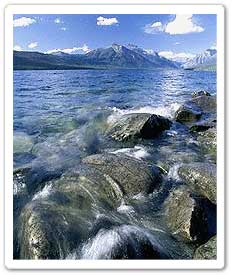- The First European Ecotourism Conference Is Soon to Begin in Pärnu, Estonia The Travel World (Sept 20, 2010)
- Green rallies, cleanliness drives held to mark Environment Day Hindustan Times (Jun 5, 2010)
- TN launches eco tourism policy Press Trust of India (Jun 7, 2010)
- : ECO-FRIENDLY TRAVEL GUIDE; PLACES TO STAY; Sustainable . Pay-Per-View - Los Angeles Times - ProQuest Archiver (Jun 29, 2008)
- 2,757.1 MPG Achieved at 2009 Shell Eco-marathon Americas(R) Peter Greenberg.com Travel News (Jun 7, 2009)
- Indian consumers most eco-friendly, finds global survey Peter Greenberg.com Travel News (May 7, 2008)
- CC Africa launches 'ResponsibleSafaris.com' Travel Wires,South Africa ( May 04, 2007 - 04:00 )
- First Northeast India Tourism Festival begins Economic Times,India ( May 04, 2007 - 04:00 )
- Arabian Travel Market notches up 5.2% first day visitor growth ArabianBusiness.com (press release),United Arab Emirates ( May 02, 2007 )
- Rs100-cr multipurpose project in Kanska The Statesman,India ( May 02, 2007 )
- Egypt seeks investors, trade meetings at ATM Travel & Tourism News Middle East,Bahrain ( May 01, 2007 )
- Emaar Properties expands to Southeast Asia with AED 2.2 billion ... Al-Bawaba,Jordan ( Apr 30, 2007 )
- Madhya Pradesh: A Private View Belfast Telegraph,UK ( Apr 30, 2007 )
- The Top 10: Holiday Hit List in the Subcontinent Belfast Telegraph,UK ( Apr 30, 2007 )
- Beautiful Oceans offers first dive vacations and eco-courses that ... PR Leap (press release),CA ( Apr 26, 2007 )
- India gets international help to protect its forests RxPG NEWS,CA ( Apr 26, 2007 )
- Asian mayors vow to work toward eco-sustainable transport PeaceJournalism.com,Nepal ( Apr 24, 2007 )
- Incredible India! Express Hotelier,India ( Apr 24, 2007 )
- India Opposes Tourism In Antarctica Bernama,Malaysia ( Apr 22, 2007 )
- 'Offer package deals to give tourism a boost' Chandigarh Newsline,India ( Apr 21, 2007 )
- ASSOCHAM: CWG 2010 to Spur Indian Tourism Industry Growth PressZoom (press release),Netherlands ( Apr 19, 2007 )
- ASSOCHAM Commonwealth Games 2010 to Spur Indian Tourism Industry ... Newswire Today (press release),UK ( Apr 19, 2007 )
- Kuwait: 'Go for New Delhi' slogan as India bids for 2014 Asiad Mangalorean.com,India ( Apr 15, 2007 )
- Tempting offers for tourists from India's 'salad bowl' India PRwire (Press Release),India ( Apr 11, 2007 )
- International Tourism Conference on 21st April India PRwire (Press Release),India ( Apr 08, 2007 )
Latest Eco News
Important News Archive

- Who's afraid of nuclear bombs?
- Six countries sign Kyoto convention on climate change
- Greenhouse gas limits attained at Kyoto
- Industry's conference in Kyoto -- NGOs counter move
- 500 MDs, scientists oppose climate treaty
- Al Gore's "hot air talks"
- Tiger population on decline after "chief protector" Indira Gandhi's death
- Today's Tidbits from the World over
- Kyoto Update
December 9: Following the meeting of U.S. Vice President Al Gore and Japanese Prime Minister Hashimoto, who currently hold the fate of the conference in their hands, many government representatives and environmental NGOs criticized Prime Minister Hashimoto who left the conference after only two hours and expressed discouragement at Vice President Gore, who displayed a "flexible stance", but only repeated the U.S. government's previously stated official position. "There is only a little time left, and the conference is at a complete stalemate," said one participant. "I doubt we can reach an agreement this time," said another. "It seems that we might not reach agreement on the Kyoto Protocol during the Kyoto conference, and that the decision will be delayed until next year in Argentina. The continued existence of my island nation is dependent on the results, so I would like to return with some sort of positive results from this conference," said a representative of the delegation of Nauru in the South Pacific. After Vice President Gore's speech, the three major international environmental NGOs made emergency announcements. "Stop wasting time with discussion that does not produce results. The U.S. has yet to make any specific promises regarding the reduction of greenhouse gases," said Greenpeace representative Jennifer Morgan. Twenty-six representatives from 18 countries which belong to the Friends of the Earth gathered in front of the International Conference Hall and waved flags displaying a red drawing of the Earth. "We want the ministers from each country to take to heart the wishes of the people of the Earth, and come to agreement on a clear course of action to prevent global warming." [Top]
Earlier, Mr Gore's grandstand speech to the UN global warming conference on December 8 left his opponents on either side crying foul, deriding his remarks as going too far or not far enough. "The briefcase was empty. There were no targets in his speech and that's what we need to know now in the next three days," said Adam Markham, director of the World Wide Fund for Nature. Greenpeace said Mr Gore should "cut the hot air" and expressed disappointment at his failure to commit the U.S. to further emission cuts. [Top]
Indian environment minister Saifuddin Soz clarified that under the Berlin mandate, adopted at the first climate change conference in 1995, the developing world was not required to make any commitment. Any cut below the 10% agreed at the 1990 conference would be "irrelevant", Soz said.
 The
International Conference on Voluntary Business Initiatives for Mitigating
Climate Change (sponsored by the Federation of Economic Organisations and
other economic organisations) got underway on December 3 at a hotel in
Kyoto, Japan. Meetings were held to discuss the role of industry in dealing
with the problem of global warming. The conference, planned to coincide with
COP3, has adopted a collaborative declaration asking that the COP3 Kyoto
Conference should respect the independence of industry. The members opined
that allowing industries to act independently would be more effective than
binding all industries to stiff, one-sided regulations. [Top]
The
International Conference on Voluntary Business Initiatives for Mitigating
Climate Change (sponsored by the Federation of Economic Organisations and
other economic organisations) got underway on December 3 at a hotel in
Kyoto, Japan. Meetings were held to discuss the role of industry in dealing
with the problem of global warming. The conference, planned to coincide with
COP3, has adopted a collaborative declaration asking that the COP3 Kyoto
Conference should respect the independence of industry. The members opined
that allowing industries to act independently would be more effective than
binding all industries to stiff, one-sided regulations. [Top] In the first part of the conference, "Symposium on Voluntary Business Initiatives for Mitigating Climate Change", representatives from 13 economic organisations in Europe, the U.S. and Asia participated in discussions on global warming. Industry and Employers stressed the importance of partnerships with governments, and the Federation of Economic Organisations stated that independent action is more practical and effective than general regulations. The collaborative declaration, which was discussed and adopted at the meeting, expresses that industry plays an indispensable role as a promoter of countermeasures to global warming. The declaration states that clarity is needed for independent action, and requests that the policies and measures being examined at the Kyoto Conference be designed to encourage independent action by industries. The collaborative declaration will be submitted to COP3 Chairman and Environment Agency Director-General Hiroshi Oki. Meanwhile, NGOs and business organisations are intensifying their lobbying activities aimed at government representatives. On Wednesday, Greenpeace publicly released a list of the 53 economic groups participating in the conference, strongly criticising these groups as attempting to undermine the conference. NGOs from Japan have also begun a vote for "Businesses Ruining COP3". [Top]
According to Greenpeace, approximately 1,000 people related to economic organisations are participating in the conference. The largest number from any one group is 111 representatives from the International Chamber of Commerce and Industry, which is formed by businesses from around the world, followed by the Global Climate Coalition, an association of oil companies from the U.S. The Federation of Economic Organisations from Japan has also sent 60 representatives to the conference. Greenpeace has formed a "Political Team" comprising 12 members. Members of the group are assigned to specified regions - the U.S., Japan, the EU, etc. -- and analyze information collected daily about each of these governments. The members then exchange information directly with government representatives from each country in an attempt to realise a major reduction in carbon dioxide (CO2) emission. American Kalee Kreider of Greenpeace states that the U.S. proposal (0% reduction) is so low because business groups are making major political contributions to sway the politicians, and that Greenpeace will do as much as possible to counter the influence of business lobbyists at COP3. The Japanese NGO "Friends of the Earth" has also created a list of 12 companies such as energy related businesses and automobile manufacturers that are hindering carbon dioxide reduction. Since Wednesday, the group has been asking people participating in the conference to vote on the "Dirty Dozen Ballot", selecting the worst businesses that are most severely hindering CO2 reduction in an effort to check the lobbying activities of business and economic organizations. The list includes the Global Climate Coalition, Exxon, Tokyo Electric, Ford/Chrysler/GM, Shell, ABB, World Business Council for Sustainable Development, Uranium Institute and FORATOM, Mitsubishi, Mobil, Elf Aquitaine and British Petroleum. (ENN) [Top]
 More
than 500 physicians and scientists who say scientific understanding of the
global climate is inadequate to justify drastic control policies signed a
letter addressed to world leaders at the Kyoto climate talks that opposes a
climate change treaty. "As responsible members of the scientific and
medical communities, we support efforts to improve the global environment
and public health," says the letter. "Given that economic
prosperity is necessary for a cleaner environment and improved public
health, action that harms the global and national economies should not be
taken without compelling evidence of need." The letter recommends that
the world's governments defer taking action on a climate change protocol
until the science shows that limiting greenhouse gas emissions will "benefit,
not harm, the global environment and public health." The letter was
initiated by the Advancement of Sound Science Coalition and the European
Science and Environment Forum. "This letter has been in circulation
only a short time," said TASSC executive director Steven J. Milloy. "We
are overwhelmed by the strength of the response and will continue to accept
signatures. World leaders assembled in Kyoto should heed this call to avoid
rash and harmful action on greenhouse gas emissions." TASSC, located in
Washington, D.C., and ESEF, located in Cambridge, United Kingdom, are
not-for-profit organizations of scientists, former public policy officials
and others interested in the use of sound science in public policy.
[Top]
More
than 500 physicians and scientists who say scientific understanding of the
global climate is inadequate to justify drastic control policies signed a
letter addressed to world leaders at the Kyoto climate talks that opposes a
climate change treaty. "As responsible members of the scientific and
medical communities, we support efforts to improve the global environment
and public health," says the letter. "Given that economic
prosperity is necessary for a cleaner environment and improved public
health, action that harms the global and national economies should not be
taken without compelling evidence of need." The letter recommends that
the world's governments defer taking action on a climate change protocol
until the science shows that limiting greenhouse gas emissions will "benefit,
not harm, the global environment and public health." The letter was
initiated by the Advancement of Sound Science Coalition and the European
Science and Environment Forum. "This letter has been in circulation
only a short time," said TASSC executive director Steven J. Milloy. "We
are overwhelmed by the strength of the response and will continue to accept
signatures. World leaders assembled in Kyoto should heed this call to avoid
rash and harmful action on greenhouse gas emissions." TASSC, located in
Washington, D.C., and ESEF, located in Cambridge, United Kingdom, are
not-for-profit organizations of scientists, former public policy officials
and others interested in the use of sound science in public policy.
[Top]
KYOTO : Costa Rican cloud forest birds migrate to cooler air uphill. English frogs and newts spawn earlier in the year. Sea birds off the American Pacific coast nearly vanish in 10 years. All are signs of how global warming is altering the habits, migration and breeding of animals "and how it could eventually affect humans, environmentalists at a global climate conference said yesterday. These changes will have a very serious impact on human welfare," said Barnaby Briggs, of Birdlife International. Briggs pointed to a recent study by his group and the World Wildlife Fund that documented how several species of birds, plants and other wildlife were adapting to the gradual warming of the earth's atmosphere. Briggs and other environmentalists urged officials meeting at the UN climate conference in Kyoto, Japan, to adopt ironclad restrictions on the emissions of so-called "greenhouse gases" blamed for the gradual increase in the temperature of the planet. "The fundamental thing needed ... Is that greenhouse emissions must be reduced in the long term to ensure a secure future for wildlife," he told presspersons.
Greenhouse gas limits attained at Kyoto It took an all-night session and lots of haggling over details for delegates at the Kyoto conference on global warming to reach a tentative agreement on limits for emissions of the "greenhouse" gases. The proposal, still to be approved by a vote of the full gathering of 160 nations at the Kyoto conference, 38 industrialised nations -- including the United States, Japan and the nations of the European Union (EU) -- refers to an agreement to accept binding targets for reducing their emissions. While the EU countries are expected to set emissions targets for the year 2008 at 8 per cent below the level of emissions in 1990, the United States and Japan are expected to effect cuts in emissions to the order of 7 per cent and 6 per cent respectively. The other 21 countries are expected to meet similar targets between 2008 and 2012. Thus, the 38 nations are expected to cut greenhouse emissions to slightly more than 5 per cent below 1990 levels. "This is a figure that is going to have an impact on the concentration of greenhouse gases in the atmosphere," said Raul Estrada, chairman of the Kyoto conference, where the agreement was hammered out over the past 11 days. Meanwhile, China and other countries have argued that such limits would harm the industrialisation plans needed to build their economies and mitigate poverty in their countries. Only voluntary limits will be acceptable, they opine. However, delegates did approve a proposal that would allow countries to "buy" pollution credits on an international market, allowing a country that was under its limit for greenhouse gas emissions to sell extra capacity to countries out of room under their cap, reports ENN. China and India had objected to the pollution credit proposal, sponsored by the United States, asserting it would allow industrialised countries to escape making required cuts in greenhouse gas emissions.
 The
treaty becomes binding on countries only when ratified by their governments.
Besides, the exemption for developing countries is expected to make it
difficult to get the treaty ratified by the U.S. Congress. "The Senate
will not ratify a flawed climate treaty," Senate Majority Leader Trent
Lott warned Thursday in a statement. Without reductions in greenhouse gas
emissions, scientists say that carbon dioxide in the atmosphere could double
during the next century, warming the atmosphere and triggering an
environmental chain reaction that could raise sea levels, change ocean
currents and intensify damage from storms, droughts and the spread of
tropical diseases. Emissions of six gases -- carbon dioxide, methane,
nitrous oxide and three halocarbons used as substitutes for ozone-damaging
chlorofluorocarbons -- would be affected. (ENN & Reuters) [Top]
The
treaty becomes binding on countries only when ratified by their governments.
Besides, the exemption for developing countries is expected to make it
difficult to get the treaty ratified by the U.S. Congress. "The Senate
will not ratify a flawed climate treaty," Senate Majority Leader Trent
Lott warned Thursday in a statement. Without reductions in greenhouse gas
emissions, scientists say that carbon dioxide in the atmosphere could double
during the next century, warming the atmosphere and triggering an
environmental chain reaction that could raise sea levels, change ocean
currents and intensify damage from storms, droughts and the spread of
tropical diseases. Emissions of six gases -- carbon dioxide, methane,
nitrous oxide and three halocarbons used as substitutes for ozone-damaging
chlorofluorocarbons -- would be affected. (ENN & Reuters) [Top]
Tiger population on decline after "chief protector" Indira Gandhi's death WASHINGTON: In the death of Prime Minister Indira Gandhi, Indian tigers have lost their "chief protector", says the National Geographic Magazine. 'The Project Tiger', initiated by Indira Gandhi in 1973, resulted in the doubling of their numbers by the time she died in 1984 and after that it began to decline. "The tigers began to disappear. It was discovered they were being poisoned, shot and snared so their bones could be smuggled out of India to supply manufacturers of Chinese medicines," it adds. The Project Tiger had set aside nine national parks for special protection. The plan seemed to be working officials announced in 1984 that the number of tigers had more than doubled. But the death of Gandhi later that year meant the loss of the tigers chief protector. "Human population rose and promised safe corridors were converted to farmers fields, inundated by dams and honeycombed with coal mines. There were fewer and fewer places to which young tigers could disperse and more and more conflicts between tigers and people," it adds. Extended field research and documentation by author of the report for the magazine Geoffrey C. Ward and photographer Michael Nicoals have been shown that despite some progress in preserving the species the future of the tiger remains perilous. Nicoals spent more than a year on the assignment, photographing tigers in seven countries and enjoying unusual access to the parks in India where tigers live. He shot much of the story from atop an elephant, reports UNI. [Top]
Bahuguna decides to end fast
TEHRI: Eminent environmentalist Sunderlal Bahuguna decided to call off his 56-day-long fast following the Government Order to stop blastings and heavy vehicular traffic on the Tehri dam site till his further meeting with Prime Minister I K Gujral. Planning Commission Deputy Chairman Madhu Dandavate, who alongwith Union Energy Minister Y K Alagh and Environment and Forest Minister Saifuddin Soz, called on the Chipko leader. The meeting, to be attended by other ministers also, is likely to take place in the first or second week of January after Bahuguna's complete recovery from fast. However, with the fall of the Gujral government, the situation remains bleak till further developments take place. [Top]
Six countries sign Kyoto convention on climate change
 A
total of six countries signed the Kyoto protocol on climate change on March
16, 1998, the first day it was open for signatures with the hope that it
would be enforced after 2000. Maldives, Samoa, Antigua and Barbuda signed in
the morning and Switzerland, St. Lucia and Argentina in the afternoon. For
the small island nations, it was a symbolic political gesture because they
would be directly affected by rising sea levels if the climate warms up.
Michael Zammit Cutajar, who presided over the conference in Kyoto, said
countries have one year to sign the protocol, which will be enforced 90 days
after the legislatures of 55 countries have ratified it. Ratification
involves enacting national laws to enforce the protocol. Cutajar said he
expected the ratification process to take two to three years. "We can
look forward to the protocol's entry into force very early in the next
century and to a first review of its contents soon thereafter", Cutajar
said. He said the first benchmark will be 2005 when the parties will
demonstrate progress in meeting emissions targets as called for in the
protocol. Parties to the protocol should reduce their combined emissions in
six greenhouse gases by 5 per cent below 1990 levels by the 2008-2010
period.
A
total of six countries signed the Kyoto protocol on climate change on March
16, 1998, the first day it was open for signatures with the hope that it
would be enforced after 2000. Maldives, Samoa, Antigua and Barbuda signed in
the morning and Switzerland, St. Lucia and Argentina in the afternoon. For
the small island nations, it was a symbolic political gesture because they
would be directly affected by rising sea levels if the climate warms up.
Michael Zammit Cutajar, who presided over the conference in Kyoto, said
countries have one year to sign the protocol, which will be enforced 90 days
after the legislatures of 55 countries have ratified it. Ratification
involves enacting national laws to enforce the protocol. Cutajar said he
expected the ratification process to take two to three years. "We can
look forward to the protocol's entry into force very early in the next
century and to a first review of its contents soon thereafter", Cutajar
said. He said the first benchmark will be 2005 when the parties will
demonstrate progress in meeting emissions targets as called for in the
protocol. Parties to the protocol should reduce their combined emissions in
six greenhouse gases by 5 per cent below 1990 levels by the 2008-2010
period.If the targets are met by 2010, emissions levels would be 29 per cent below what they would have been without the protocol. The six greenhouse gases are carbon dioxide, methane, nitrous oxide, hydrofluorocarbons, perfluorocarbons and sulphur hexafluoride. The greenhouse effects are the result of those gases trapped in the atmosphere, causing a warming up of the Earth's atmosphere. The protocol contained legally binding targets for developed countries beginning of the next century. The United States alone is responsible for 36 per cent of the world's carbon dioxide emissions. Russia comes second, reports DPA.

- Bharatpur Bird Sanctuary
- Corbett National Park
- Kaziranga National Park
- Periyar Wildlife Sanctuary
- Ranthambore Wildlife


- Desert Safari Tour Rajasthan
- Ganges River Rafting
- Kerala Houseboat Vacation
- Wildlife Tour in India


- Gramam Homestay
- Hermitage Guest House
- Kannankeril Homestay
- Kerala Village Homestay
- Our Native Village
- The Bungalow

